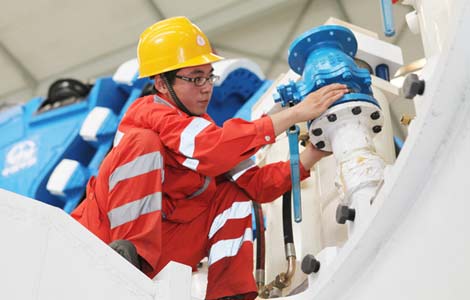Sustainable urbanization
Updated: 2013-06-19 07:55
By Chi Fulin (China Daily)
|
||||||||
To increase the level of population urbanization, we need to learn from and cooperate with countries like Germany. Especially, we need to learn and draw on their experience in formulating a policy and institutional system for population urbanization.
Three, how to solve the issue of population over-aggregation in big cities?
At present, Beijing, Shanghai, Guangzhou and Shenzhen are the four most populous cities in China. The population in both Beijing and Shanghai exceeds 20 million, more than their planned capacity of 18 million by 2020. On the other hand, the population in medium and small cities has been declining. Although house prices have remained high in big cities, the attractiveness of big cities to migrants is still far stronger than that of the smaller cities.
The Chinese government has been prioritizing the development of medium and small cities and rural towns, and has promulgated many policies for this purpose. Yet it is still a case of "feeling the stones in the river" as Deng Xiaoping observed. In Germany, there is a rational industrial, employment and population distribution, as 60 percent of the population and 80 percent of small and medium-sized enterprises are located in small towns with a population less than 20,000 each.
China can tackle the problem of irrational population distribution by learning from the experience of countries such as Germany.
Four, how to improve the quality of urbanization?
All the big cities in China suffer from "urban diseases", such as serious air pollution and traffic congestion. And there are still bottlenecks that prevent effective efforts to tackle the problems brought about by urbanization. Germany and other developed countries have rich experience in protecting the urban environment and easing traffic jams. Therefore, China will strengthen exchanges and cooperation with Germany and other countries to improve the quality of its urbanization. This is a practical and urgent need for China.
A new type of urbanization in China will not only unleash the biggest potential driver for its future development, it will also greatly contribute to the rebalancing of the world economy. For this purpose, China needs to establish platforms for exchanges and cooperation with Germany and other countries.
The author is president of the Hainan-based China Institute for Reform and Development.

 7 injured at Beckham event
7 injured at Beckham event
 A science class from above Earth
A science class from above Earth
 Chinese telecom companies call on Myanmar
Chinese telecom companies call on Myanmar
 June PMI signals weakness
June PMI signals weakness
 Rising demand sends producers overseas
Rising demand sends producers overseas
 Michelle lays roses at site along Berlin Wall
Michelle lays roses at site along Berlin Wall
 Historic space lecture in Tiangong-1 commences
Historic space lecture in Tiangong-1 commences
 'Sopranos' Star James Gandolfini dead at 51
'Sopranos' Star James Gandolfini dead at 51
Most Viewed
Editor's Picks

|

|

|

|

|

|
Today's Top News
China urges resumption of six-party talks
SEC charges China-based firm with fraud
Bank of China denies monetary default report
Snowden's future hangs in balance
China reiterates support for the UN
Dairy measures start at source
June PMI signals weakness
Drug-related crimes on the rise in Xinjiang
US Weekly

|

|







